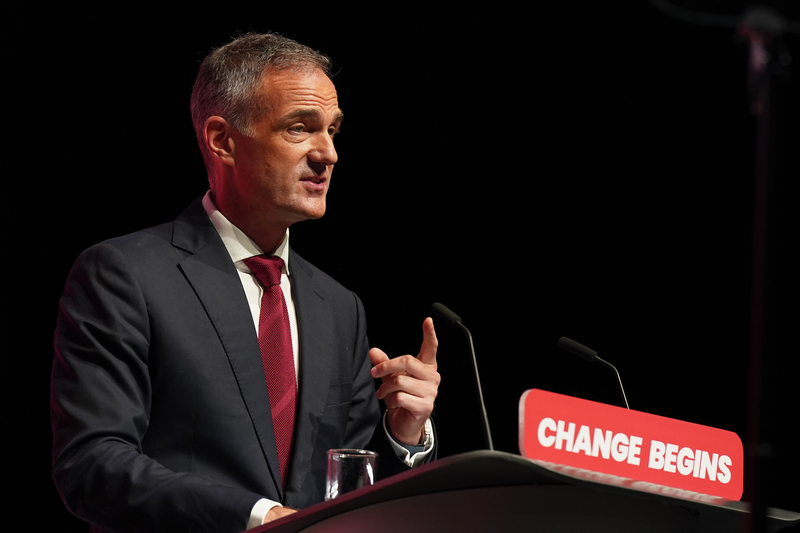As the FCA has consistently reminded firms across Market Watch publications, Dear CEO letters and speeches, market abuse remains a serious concern for regulators at a national and international scale. With brokers being a key part of the trading cycle, and with regulatory activity only increasing, brokers should have a careful look at whether their client offboarding arrangements pass muster.
In 2023, over 4,300 STORs were submitted to the FCA, with a similar number submitted in the previous three years, highlighting the extent to which market abuse affects firms. And, at the start of that year, the regulator issued four market abuse-themed Market Watch publications focusing on trading by organized crime groups, flying and printing behaviors, market soundings and CFD market abuse breaches.
The most recent FCA business plan also highlights its intent to take “assertive action” and the steps it has taken internally in revamping its in-house surveillance system to detect market abuse.
There was also a flurry of enforcement activity in 2022 , with the FCA issuing fines totalling over £18m ($22.9m) in the second half of the year. This level of financial censure didn’t continue into 2023 or the early part of 2024, but the threat of enforcement remains as high as ever.
Threats to maintaining market integrity
Brokers face significant levels of market abuse risk. Abusive trades can pay well, so criminals target brokers to leverage the broker’s intermediary position, committing market abuse violations on their behalf. Brokers therefore have to be cognisant of the market abuse risks relevant to them while ensuring they have effective mitigating systems and controls in place.
We see brokers still grappling with the following challenges:
- establishing effective surveillance controls;
- assessing the different risks posed by different client profiles;
- dissemination of information;
- controls on the prevention of market abuse.
Determining the right level of surveillance
Despite it being eight years since the Market Abuse Regulations came into effect, we are still meeting brokerage firms who are struggling with their trade surveillance obligations. The requirements are clear; firms professionally arranging or executing transactions need to monitor all orders received and transmitted, and all transactions executed. That includes each and every transaction executed, placed, modified, cancelled or rejected.
Despite this, many have yet to fully scope in all asset classes, are only performing a sample selection for review, or in the worst-case scenario, are doing nothing at all.
With brokers typically overseeing high volumes of trades, the level of surveillance needed is no small task. You must be prepared to commit resource (financial, human and technological) to meet these requirements, or risk significant censure from the FCA.
In 2022, the FCA called out several firms for inadequate surveillance systems that failed to adequately monitor for market abuse. To avoid these consequences, we recommend taking these crucial steps:
- Scope out your client base and the risks they face.
- Ensure each asset class has a bespoke set of surveillance parameters, as the calibration of alerts will be less effective where a blanket approach is taken. The fixed income market is traded differently to the equities market, and surveillance parameters should take this into account. Similarly, small cap equities typically experience very different liquidity levels compared to large cap equities. Bespoke calibration should take into account the different trading behaviors needed to manage the instrument and market characteristics.
- Ensurie all asset classes are captured in the monitoring, regardless of how big or small – the regulations require the total capture of all transactions and orders.
Client responsibilities
Brokers aren’t just there to service the big banks and financial institutions of the City, as the everyday retail customer equally relies upon them to access markets. Access to brokerage accounts is as easy as it’s ever been. A simple application via an app on your smartphone is all it takes for clients to access some brokerage accounts. As a result, brokers have a real responsibility to consider how market abuse risks arise across their client base.
To navigate some of the common issues we’ve seen clients grappling with, we suggest the following:
Considering different trading patterns of retail and professional clients
Unless they have had a windfall, it’s uncommon for retail customers to be trading large sums of money. The pot may grow over time, but certainly not at the level firms may see for professional clients – especially institutions or those aggregating orders. Brokers servicing retail and professional clients should therefore consider bespoke calibrations to take account of the different behaviours.
Understanding a trade’s impact on the market
Retail clients are typically less aware of market abuse rules and how certain trading behaviors can affect the market, for example, a client submitting block orders. In such a scenario, the client’s order may need to be split to avoid adversely moving the price – a concept that might not be obvious to the everyday investor. Be prepared to work with your client base and manage expectations.
Accessing inside information and trade rationale
Most retail customers don’t tend to routinely handle inside information on a regular basis. Conversely, professional clients – especially those working in financial services – are far more at risk of coming into contact with inside information. Understanding the intention and background of a trade is a potent way to identify suspicious activity.
This is especially important if the trade is suspected of being on the basis of inside information. Brokers who offer execution-only services may also struggle in their investigations of potential insider trading if they do not know the underlying rationale of a trade.
Consider the trade monitoring of a discretionary investment manager. The investment manager may provide a rationale before the order is sent to the trader to work. Teams carrying out surveillance can therefore consider the rationale when assessing whether the trade was abusive. Though no one ever put “I am trading on inside information”, the surveillance officer will at least have additional context when reviewing the trade.
Execution-only brokers will not have access to the trade rationale unless they insist upon it at the time of the order, and so the effectiveness of investigation could be hindered. Brokers therefore need to factor into their risk assessments that surveillance may be performed without knowing whether the customer has access to inside information, and whether that is the basis of the trade.
Being meticulous when dealing with omnibus accounts
For brokers who execute trades on behalf of institutional clients with omnibus accounts, there is an added challenge of considering the knowledge and rationale behind the trade of the underlying client. Without sight of the underlying client, brokers face a real challenge in identifying individual / specific instances of market abuse, as that trade is lost in the aggregated deal.
We’ve also seen brokerage firms placing significant reliance on third parties to conduct trade surveillance. If the firm doesn’t have sight of the underlying client, or believes the buy side firm has better sight of the underlying client’s trade, then it may not establish adequate surveillance arrangements despite being part of the transaction chain.
Dissemination of information
In January 2024, the FCA revisited the subject of dissemination of information in Market Watch 76. In that issue, it highlighted that the abusive behaviors of “flying” and “printing” remain prevalent in brokerage firms, despite its warnings in Market Watch 57.
Flying occurs when a broker falsely communicates to its clients, or other market participants, that it has bids or offers. Printing describes a broker’s claim to have executed a trade as a specified price and / or size, when no such trade has taken place. These behaviors aim to encourage further activity from clients and market participants responding to the false impression of an instrument’s liquidity and / or price.
By the nature of their role, brokers are also often liaising with various counterparties though a variety of communication channels – trading chat platforms, email, phone. This brings with it an increased risk that any information they share could lead to false or misleading messages.
You can mitigate this risk with clear controls and systems, such as:
- defining communication channels and prohibitions, for example the prohibition of instant messaging apps;
- establishing or strengthening effective e-communications surveillance controls;
- providing regular training on the specific dissemination market abuse risks;
- being aware of incoming dissemination. Even if you’re not directly disseminating information, you could respond to a false or misleading impression, playing into the hands of the abuser and moving the price of a financial instrument.
Prevention of market abuse
As highlighted earlier, some brokerage firms are still attempting to navigate the requirements of trade surveillance, which falls within a firm’s set of “detective” controls. But it’s also worth being aware of the preventative controls necessary to mitigate market abuse risk.
SYSC 6.1.1R requires firms to counter the risk of financial crime. Appropriate measures for the prevention of financial crime are likely to fall into two distinct categories:
- the identification and prevention of attempted financial crime pre-trade;
- the mitigation of future risks posed by clients who have been identified as having already traded suspiciously.
Preventative measures you can take include:
- carrying out enhanced monitoring / due diligence on a client;
- carrying out enhanced monitoring on staff members / client trading activity;
- restricting the client’s access to particular markets or instruments;
- restricting services provided to the client (for example direct market access);
- taking disciplinary action against an employee;
- ultimately terminating the client or employee relationship.
Preventative measures don’t have to take place at the beginning of the client relationship. If and when suspicious trades or orders are identified, consider the arrangements you have in place and how many STORs or near misses you’re willing to accept before a client’s trading is either restricted or they are fully offboarded.
Eoghan Hartigan leads the capital markets team, supporting clients with best execution, CASS and the reporting obligations that come with trading activity, including transaction and EMIR reporting. Peter Bowyer is a consultant, he works with clients on a number of regulatory areas including CASS, market abuse and best execution.














